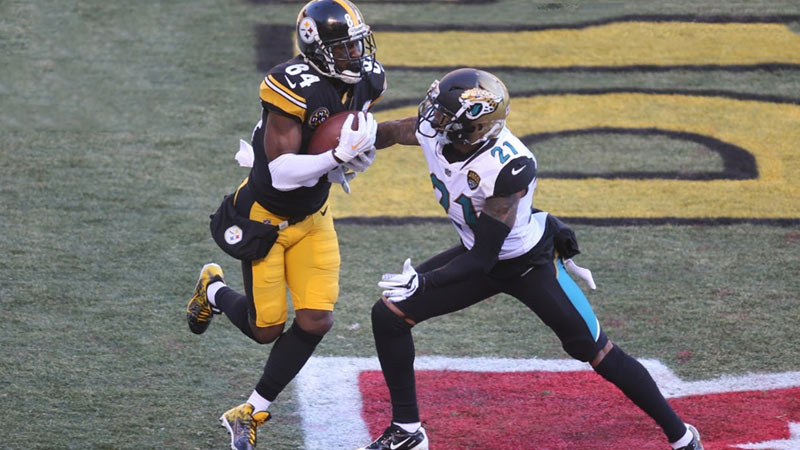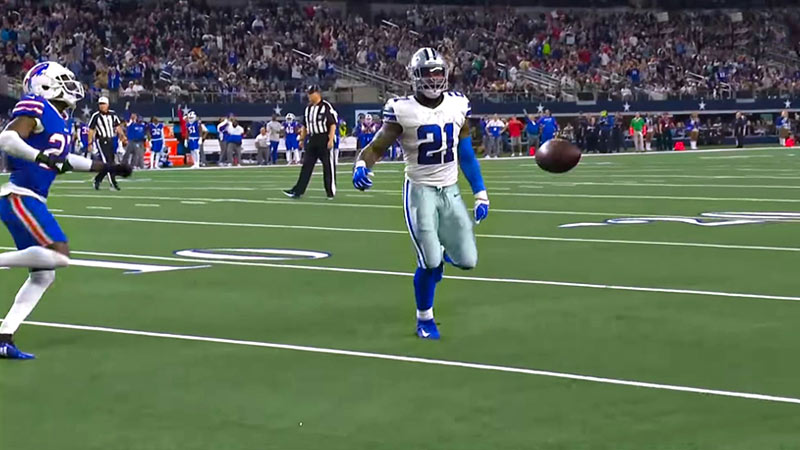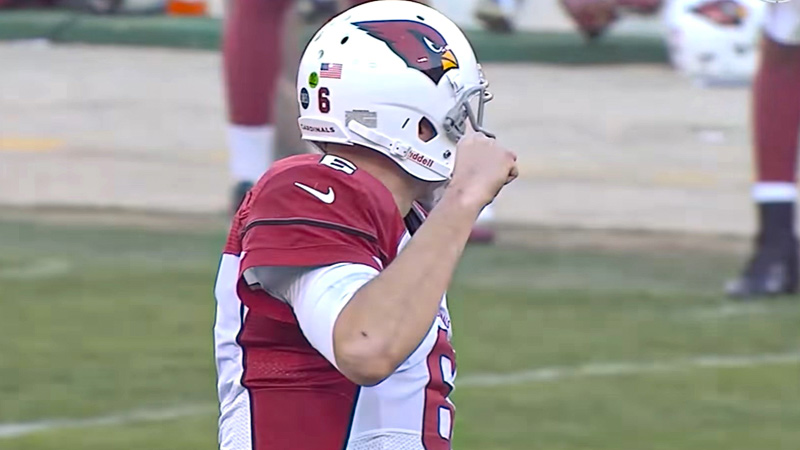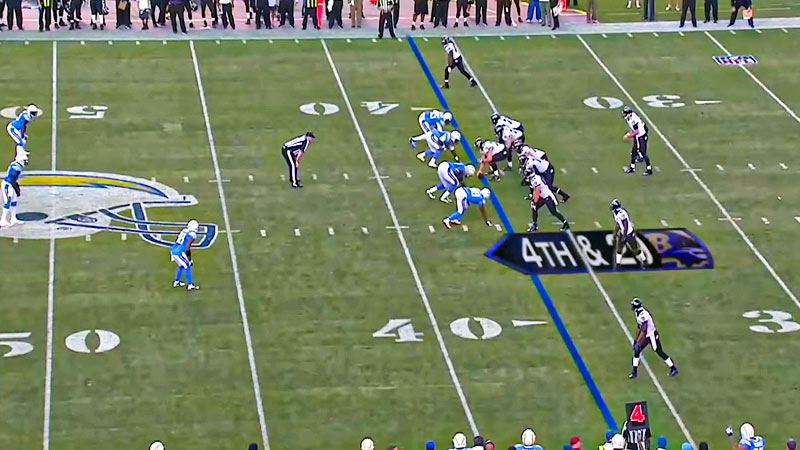In the fast-paced world of American football, every moment on the field is filled with strategy, tension, and high-stakes decision-making. One of the most critical junctures in the game is the arrival of the 4th down.
Whether it’s a nail-biting fourth-and-short or a daring fourth-and-long, this down is a defining moment that can determine a team’s fate.
In the modern NFL, the 4th down stands as a pivotal moment in which teams must make critical decisions. Will they opt for a punt to flip field position, attempt a field goal to secure points, or go for it with a daring offensive play to extend a drive?
These choices are a testament to the ever-evolving tactics and strategies employed by coaches and players alike.
But why is there a 4th down in NFL football? What’s the reasoning behind this pivotal aspect of the game? In this exploration, we peel back the layers of football history, strategy, and tradition to uncover the significance of the 4th down.
From the origins of downs to the strategic choices coaches and teams face, we delve into the fascinating world of NFL football’s fourth down to understand why it’s a cornerstone of this beloved sport.
Why Is There a 4th Down in NFL Football?
The concept of downs has its roots in the early days of American football, which evolved from rugby and other football codes in the late 19th century.
In these early forms of the game, there were no downs, and teams could maintain possession of the ball indefinitely. This lack of structure led to lengthy and uneventful contests, with little incentive for teams to take risks or advance the ball.
Recognizing the need for a more structured and dynamic game, football innovators introduced the concept of downs.
Each team would now have a set number of opportunities (downs) to advance the ball a specified distance (10 yards) towards the opponent’s end zone. Failure to do so within the allotted downs would result in a turnover of possession.
The Significance of Three Downs
Originally, football used a three-down system, which is still in use in Canadian football today. The three-down system was adopted in part to create a faster-paced game with more frequent turnovers and scoring opportunities. However, this system presented a unique set of challenges and strategies.
Teams faced intense pressure to gain significant yardage on each of their three downs, as punting was not a viable option in such a limited down format. This led to a more pass-heavy style of play, as teams looked to capitalize on the opportunity for big gains and quick scores.
The Transition to Four Downs

The introduction of the 4th down in American football marked a significant shift in the sport’s strategy and tactics. The decision to add a fourth down was largely influenced by the desire to create a more balanced and strategic game.
It offered teams additional opportunities to maintain possession, allowing for a more measured and methodical approach to offense.
With the inclusion of the 4th down, teams had greater flexibility in their play-calling. They could take calculated risks, attempt shorter gains on early downs, and rely on the punt as a strategic tool to improve field position when necessary.
This change also fostered a more balanced approach to offense, incorporating both running and passing plays to move the chains and control the clock.
The Strategic Implications
The 4th down is where the strategic intricacies of NFL football truly come to the forefront. Teams face a multitude of options and decisions when confronted with a 4th down situation:
Punting
The most common choice on 4th down is to punt the ball to the opposing team. Punting allows teams to flip field positions, pin their opponents deep in their own territory, and potentially force them to travel a long distance to score.
Field Goal Attempt
Depending on the distance to the first-down marker and the kicker’s range, teams may opt for a field goal attempt on 4th down. This choice can result in valuable points if successful.
Going for It
In certain situations, teams may choose to go for it on 4th down, attempting to gain the necessary yardage to secure a new set of downs. This decision reflects confidence in the offense’s ability to convert and extend the drive.
Teams may also deploy fake punts or unconventional trick plays on 4th down to catch the defense off guard and keep their drive alive.
Strategic Time Management
4th down situations often come into play when managing the clock. Teams may choose to take a delay of game penalty to give their punter more room to pin the opponent deep in their territory.
Risk and Reward
Coaches must weigh the risks and rewards of each 4th down decision. The field position, score, time remaining, and the team’s overall offensive and defensive capabilities all factor into the decision-making process.
The Psychological Impact
The 4th down in NFL football isn’t just a matter of strategy; it’s a psychological battlefield where pressure, risk, and reward collide. It tests the mettle of coaches and players alike, pushing them to make split-second decisions under immense pressure.
For quarterbacks, receivers, and running backs, it’s an opportunity to shine under pressure, to convert a pivotal 4th down and keep a drive alive. For defenders, it’s a chance to make a game-changing stop and shift the momentum in their team’s favor.
Evolving Strategies
Over the years, the strategy surrounding 4th downs has evolved. Analytics have become a valuable tool for coaches and teams, providing data-driven insights into the expected outcomes of different 4th down decisions.
This has led to a more aggressive approach in certain situations, with teams increasingly willing to go for it on 4th down when the data suggests it’s the optimal choice.
The “fourth-down conversion” has become a celebrated feat, showcasing the boldness of teams and their willingness to take calculated risks. When executed successfully, it can be a game-changer, extending drives and leading to crucial points on the scoreboard.
What Happens If a 4th Down Fails in NFL Football?

In the high-stakes world of NFL football, every play carries significant consequences. This is especially true when it comes to the pivotal 4th down situations. When a team faces a 4th down, it’s a make-or-break moment that can impact the course of the game. But what exactly happens if a 4th down fails? Let’s delve into the potential outcomes and consequences of an unsuccessful 4th down attempt.
Turnover on Downs
The most immediate and direct consequence of a failed 4th down attempt is a turnover on downs. In essence, the opposing team gains possession of the football at the spot on the field where the previous offensive play ended.
This change of possession typically occurs without a change in field position, unless the offensive team manages to advance the ball beyond the original line of scrimmage.
For example, if a team fails to convert on 4th-and-5 from their own 30-yard line, the opposing team takes over at the 30-yard line, effectively beginning their offensive possession in a favorable position.
Field Position Advantage
A significant factor that influences a team’s decision-making on 4th down is field position. When a 4th down attempt fails, the field position advantage often shifts in favor of the opposing team. This change in field position can impact the flow and dynamics of the game.
For instance, if a team fails to convert on 4th down deep in their own territory, it gives the opposing offense a short field to work with.
Momentum Shift
A failed 4th down attempt can also lead to a significant momentum shift in the game. When an offense fails to convert in a crucial situation, it can provide a boost of confidence and energy to the opposing defense. Conversely, it can deflate the morale of the offensive team.
The momentum shift resulting from a failed 4th down attempt can have a cascading effect on the game, influencing subsequent possessions and plays. It can fire up the opposing team and its fans while putting additional pressure on the team that failed to convert.
Strategic Consequences
The decision to go for it on 4th down and the subsequent outcome of that decision can have strategic consequences.
Coaches are constantly weighing the risks and rewards of 4th down attempts based on various factors, including the score, time remaining in the game, field position, and the team’s confidence in its offense and defense.
If a team fails on 4th down in a critical situation, it can lead to scrutiny and second-guessing of the coaching staff’s decision.
Fans, analysts, and even players may question the choice to go for it rather than punting or attempting a field goal. Conversely, if a team succeeds on 4th down, it can be seen as a bold and calculated move that pays off.
Scoring Opportunities for the Opponent

In addition to shifting field position, a failed 4th down attempt can directly lead to scoring opportunities for the opposing team.
If an offense fails to convert on 4th down in their own territory, the opposing offense may have a short field to work with, increasing the likelihood of scoring points.
For instance, if a team fails on 4th down at their own 30-yard line, it essentially gifts the opposing team a prime scoring opportunity.
The defense will need to defend a shorter field, making it easier for the opposing offense to get within field goal range or even score a touchdown.
Game Clock Management
The outcome of a failed 4th down attempt can impact game clock management. Depending on when the failure occurs, it can provide the opposing team with valuable time to mount a scoring drive.
Conversely, if a failed 4th down attempt occurs late in the game with the team holding a lead, it can eat up valuable time and limit the opponent’s chances of a comeback.
FAQs
How did the concept of downs evolve in American football?
Downs were introduced to American football in the 19th century to bring structure and order to the game. Prior to their introduction, football lacked a standardized system for determining possession and play sequences.
Are there variations in the use of downs in different football codes?
Yes, there are variations in the use of downs in different football codes. For example, Canadian football uses a three-down system, while American football employs a four-down system.
How do teams keep track of the current down during a game?
Teams and officials typically use a down marker, commonly referred to as the “down marker” or “down box,” to keep track of the current down. This marker is displayed on the sideline and indicates the current down and the distance to go for a first down.
What happens if a team achieves a first down?
When a team successfully advances the ball 10 yards or more beyond the line of scrimmage, they are awarded a new set of downs, starting again with first down. This provides the offense with additional opportunities to move the ball toward the opponent’s end zone.
How does the concept of downs impact game strategy in football?
Downs play a crucial role in football strategy. They require teams to plan their plays carefully, considering the optimal balance between running and passing, field position, the time on the clock, and the score.
Conclusion
The 4th down in NFL football is far more than just a numerical designation; it’s a fundamental aspect of the game that adds drama, strategy, and excitement to every match.
As we’ve explored, its origins date back to the early days of American football, when the need for downs arose as a way to provide fairness and structure to the game.
The 4th down encapsulates the essence of football—a sport of strategy, athleticism, and intense decision-making under pressure. It showcases the willingness of teams to take calculated risks, the importance of field position, and the quest for momentum-shifting plays.
So, the next time you’re on the edge of your seat during a crucial 4th down in an NFL game, remember that it’s not just another down; it’s a moment that encapsulates the heart and soul of this beloved sport.







